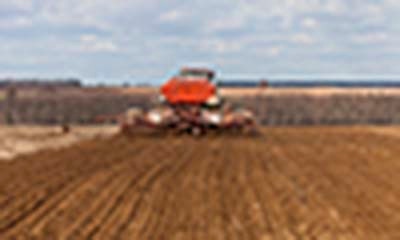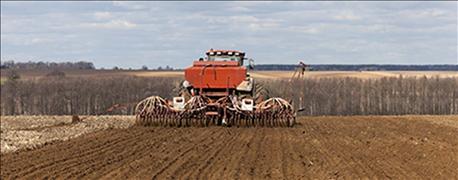
U.S. corn planting advanced to 64% done as of Sunday, up 19 points in a week, as farmers sped through fields before weekend rain arrived, USDA said on Monday. The 64% is down from a year ago but up from the 50% average.
Corn emergence was 27%, compared with 23% a year ago and the 17% average.

Soybeans were 23% planted, up 15 points for the week, and ahead of the 16% average.
Gains were made throughout the Midwest, with Iowa planting at 80%, Illinois 78% and Indiana 38%. Nebraska jumped to 53% from 26% and Minnesota went to 89% from 59%.

In Iowa, there were nearly four days suitable for fieldwork, a two-day improvement from the prior week, the state report said.

Spring wheat planting in North Dakota, the top spring wheat state, was 69%. (Photo: ligora/Thinkstock)
Rain and cool weather slowed progress in Indiana, where corn planting advanced only 8 points.
“The rainy weather kept the fields saturated, bringing spring plantings to a standstill in some areas. Hail damage was reported in central and southern parts of the state but the extent is unknown,” Indiana’s report said.
The nation’s 23% for soybean planting trailed last year’s 26% with weekly gains made throughout the Midwest. Iowa was 29% planted, Illinois 19% and Indiana 11%.
Overall winter wheat improved slightly to 62% good to excellent as spring storms brought needed rain to the Plains. The Kansas crop improved 2 points to 54% good/excellent, Oklahoma improved 1 point to 65% while Texas wheat remained at 49%.

“The state received up to one inch of rain, with the southeast and southwest counties remaining dry,” the Kansas report said. Its topsoil moisture was rated 12% surplus, 80% adequate, 6% short and 2% very short.
Spring wheat planting went to 77% versus 84% a year ago the 51% average. The crop was 39% emerged versus 47% last year and the 25% average.
Spring wheat planting in North Dakota, the top spring wheat state, was 69% and emergence was 27%, both of those are behind last year but ahead of the five-year averages.
“Even though producers did benefit from the dry conditions to plant their crops, more moisture is needed to aid germination,” the North Dakota report said. “Temperatures were 3 to 9 degrees above normal across much of the state.”
Topsoil moisture for North Dakota was rated 1% very short, 18% short, 78% adequate and 3% surplus.
Nationally, sorghum was 30% planted versus 31% a year ago and the 31% average.
Cotton was 26% planted versus 23% a year ago and the 26% average.

About the Author(s)
You May Also Like




